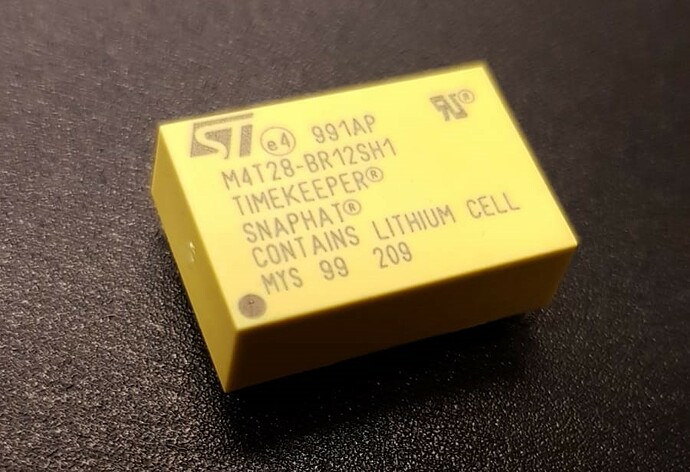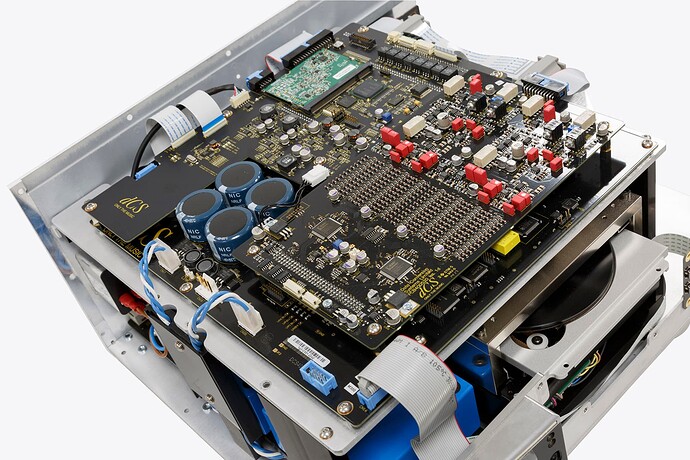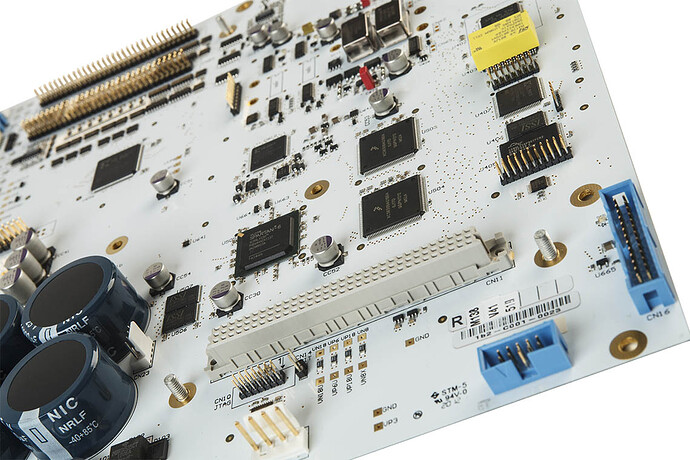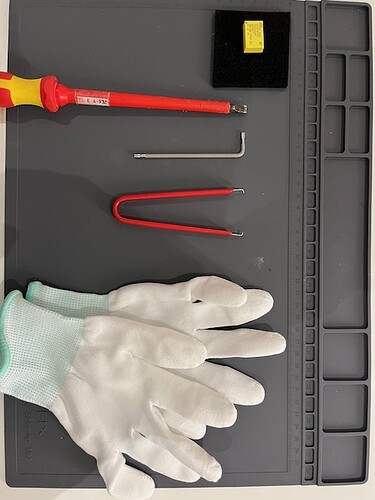After the battery had failed in my upsampler which is about 10 years old and had an upgrade in 2017 I was afraid that my battery in the Vivaldi clock would also go soon. The DAC I had just upgraded to Apex and so it should not have a battery anymore. After reading all the comments here I thought it should be not an issue to change it on my own.
So I ordered the M4T32 Battery with120mAh from ST Microelectronics, not the one dcs is using the M4T28 with only 48mAh. So I guess I will have at least double the life time with the higher capacity one. Price was £10.-. All ther tools I needed (see pic below) I had already, except the special antistatic gloves costing £ 6.-.
The most difficult procedure is how to find out how to open the enclosure of the vivaldi clock. I could find anything in the web, so I just tried to find it out. At the end it’s easy. Clearly first you have to disconnect the device fully from the power,
To open the top you have to first start at the underside. You have to open with a Torx key No T10 the 8 screws which have a black rubber ring. Now you need a bigger normal srewdriver to take out the srews underneath the srews you had just taken out. If you loosened them you can draw them out. They are very long, because they are fixing the cover which you have to move.Then take out the 4 top torx srews on the pack of the device. Now you turn the device around in the normal position and you can move the cover backwards. You can admire the nice layout and the yellow original battery M4T28 will right away catch your eye. You can also see on the pic beneath one of the long srews which are holding the cover. They have been taken out when the device was turned to the other side.
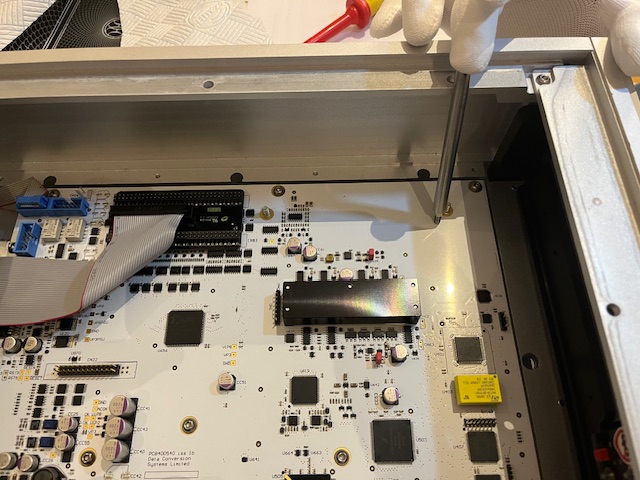
Now you would think you can easily change it, but wait a minute. If you just take the battery out with the extractor, the chip has no power, neither through the outside power nor from the battery. All content gets lost and you cannot load it up on your own and you have to send it to dcs.
So the tricky part is similar like changeing the 12V Battery in a car with a lot of electronic. In this case you have to supply some 12V outside power to the battery connectors, and only then change the battery. This way the car system has power all the time and the electronic did not loose any storage.
So on the dcs clock I connected the device after having opened the cover to the 230V outside power, made sure that all high voltage cables in the enclsosure are safely connected, switched the power on and only then pulled out with the isolated extractor the yellow battery. Clearly at this stage you should wear the gloves. Then I grabbed with the extractor the new battery, made sure it is aligned in the direction like the old one,checked wheter the tiny four contacts of the battery are exactly above the holes of the chip ( use a torch to make sure) and pressed it carefully in. STM says you need about 9 pounds fo move the battery out and 12.5 pounds to insert it.
I disconnected the external power again and build the enclosure together.
All is working perfectly now again, no memory has been lost, cost £ 20.-
I would not recommend to do it if you have no basic experience repairing electronics and opening and closing the housing is not simple.
I know now when the upsampler loses again its battery power how I can fix it. But probably there will be a new Vivaldi system then. But the value of your used equipment with an upgraded higher capacity battery will be higher and one does not have to be afraid to swith it off totally when it is not been used. Would have been nice if the better battery would have been installed by the factory or during my repair of the upsampledr the £5.- more I would have happily spent. Then it would really last over the lifetime of the device but cost savings are everywhere …
